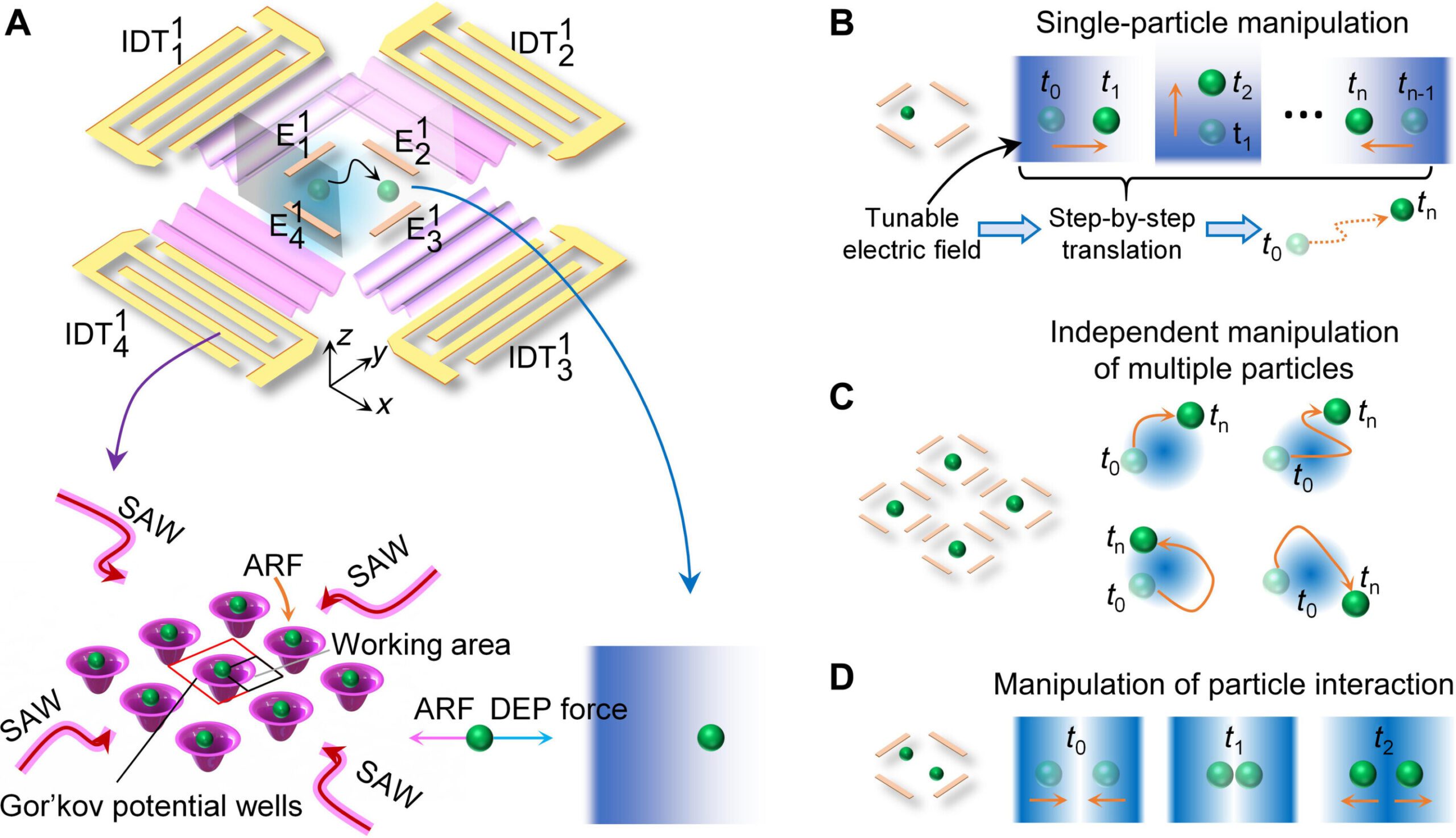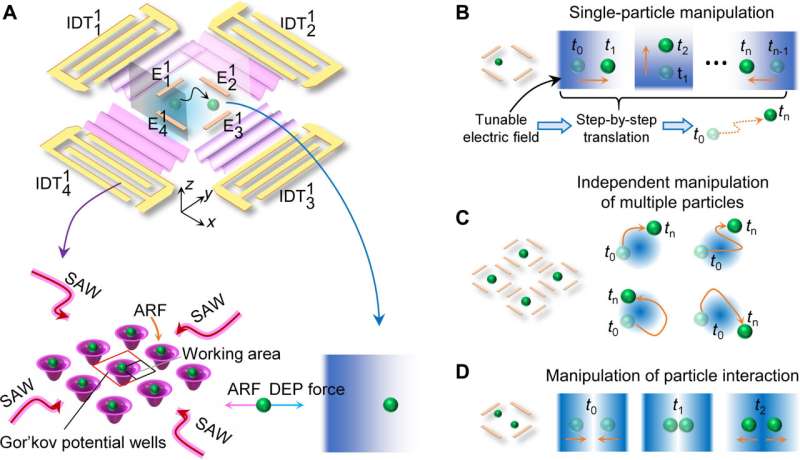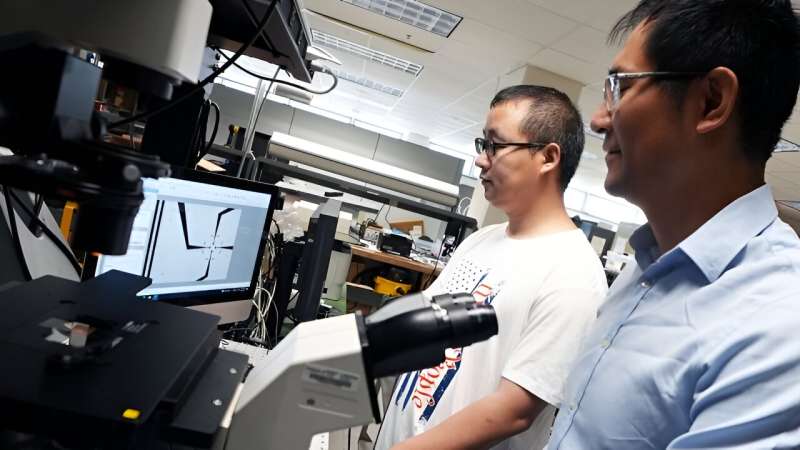

When studying the spread of cancer or the behavior of a virus like the one that causes COVID-19, the irony is that working with these harmful pathogens requires gentleness. Especially in the case of COVID, the particles do not survive well when making contact with surfaces. To observe a live virus and move it around, methods that make no physical contact will keep these destructive but tiny subjects alive longer, allowing more time to study them.
Virginia Tech Assistant Professor Zhenhua Tian has established an approach using two kinds of energy to move microparticles, offering novel applications in diagnosing, treating, and preventing the spread of diseases.
Combining acoustic waves with electric fields, Tian and his team created a new microscopic device that can precisely capture and manipulate small particles in a contactless manner. Their work has been published in Science Advances.
“This is the first study of its kind,” Tian said. “Others, including my team, have demonstrated the way that acoustic waves can control particles. Electrical fields have also been widely used to do the same thing. This is the first study that combines the two.”
Wave on wave
Tian and his research team combined two forms of energy for this first-of-its-kind technique. The first is acoustic energy using standing waves. These acoustics are outside the range of sound that can be heard by humans, and they are engineered to travel along flat surfaces of small chips equipped with tiny acoustic emitters.
The sound energy moves like the energy of an earthquake but at a much smaller scale. Though invisible, ultrasound waves are typically visualized as something like mountains and valleys. How frequently this up-and-down pattern occurs is called its frequency.
For this project, Tian’s team emitted two waves of different frequencies, crossing one another. When the waves cross, their overlap creates grid-like energy patterns composed of many energy valleys, called acoustic wells.
When microparticles encounter these wells, they are trapped and settle at the center. This is where they stay—protected enough to be studied—until another force is introduced. Electrical fields provide the second force.

Electric fields in acoustic wells
To control the movements of particles within acoustic wells, another kind of energy is needed. That’s where electrical fields enter the picture.
Where acoustic waves move in mountains and valleys, electrical fields can be generated by using microscopic electrodes. By overlapping an electrical field with an acoustic well, Tian’s team was able to precisely move the microparticles trapped in the well. Instead of remaining immobilized at the center of the well, the force induced by the electric field allows them to move around the well’s center.
Additionally, the crossing of acoustic waves creates more than one well, resulting in an almost invisible egg carton shape. The wells are distributed in a grid pattern, allowing multiple particles to be captured at the same time. When electrical fields are used to move the particles within them, each particle can be controlled separately, setting the stage for complex movement.
Working in the waves
The applications of this technology are numerous. Researchers working at the microscale will have fresh options for ways to perform their work, and the ability to handle material that is delicate, like virus particles, opens new doors.
“We envision using this method to solve many different problems,” Tian said.
“Researchers who want to precisely manipulate cells and test their interaction with one another, such as interactions between white blood cells and cancer cells, can do so without the cells touching anything but one another. If you want to study how a virus like COVID invades a cell, you could apply this method to bring them together or control their distance.”
More information:
Liang Shen et al, Acousto-dielectric tweezers enable independent manipulation of multiple particles, Science Advances (2024). DOI: 10.1126/sciadv.ado8992
Provided by
Virginia Tech
Citation:
First-of-its kind tool allows scientists to manipulate cells without touching them (2024, September 19)
retrieved 19 September 2024
from https://phys.org/news/2024-09-kind-tool-scientists-cells.html
This document is subject to copyright. Apart from any fair dealing for the purpose of private study or research, no
part may be reproduced without the written permission. The content is provided for information purposes only.